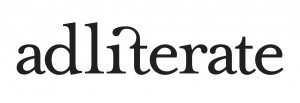The marketing truths we are all in danger of forgetting
Ask most secondary school aged kids how to prevent scurvy, a disease they will have had little contact with and they will tell you, with Vitamin C.
The use of ascorbic acid, or at least citrus fruit that have high levels of one of the few vitamins our bodies don’t manufacture, has been known for centuries.
In 1747 James Lind undertook one of the very first-ever clinical trials in which he proved the power of citrus fruit in curing sailors of scurvy. And from the late 18th Century it became routine for British sailors to be administered lemon juice while at sea.
But something weird happened at the end of the 19th and in the early 20th century. We forgot this.
When Scott attempted his ill-fated expedition to the South Pole between 1911 and 1912 the presence of scurvy was all too real in his men. Many fell ill to a disease that had been effectively cured over 100 years before. This on an expedition fuelled by the latest scientific thinking.
Science had forgotten how to cure scurvy, blinded by a whole host of new and fashionable thinking particularly a belief that the cause was rotten meat. It took until 1932 for Vitamin C to be clearly identified and nutrition put back on the front foot when it came to scurvy.
This story seems beyond belief. That a simple truth identified (if perhaps not fully understood) years before should be swept away by fashion and fad with disastrous consequences. But that’s precisely what has been happening in marketing. In the face of technological disruption we are forgetting the way that marketing works.
This phenomenon has been best documented in a recent article in the FT by Ian Leslie that should be required reading for any one in marketing. In particular he references Byron Sharp’s work in trying to re-establish the laws of marketing before its too late.
So what is it that we are forgetting? What marketing truths do you routinely hear being ignored, contradicted or compromised? Here are my top ten marketing truths, many of which are drawn directly from Professor Sharp.
- Seeking greater penetration is almost always the winning strategy rather than attempting to shift average weight of purchase.
- Light buyers are your most valuable customers not loyalists. Virtually every brand needs more light buyers.
- Buying is the desired outcome from marketing not engagement, participation or conversation. We are obsessed by the wrong metrics.
- People never care enough about brands to want to be followers, friends or fans. Not at a scale that is commercially useful.
- Brands need to ensure their mental availability but its fanciful and hideously expensive to remain ‘always on’ and few people want them to be.
- Targeting is not the holy grail of marketing. It’s helpful to a point but rests on assumptions about human behaviour that are unpredictable and misleading.
- Wastage is under-rated. One way or another wastage is a conversation with tomorrow’s customers.
- There is no earned media. With a few highly notable exceptions, for most brands, all media is paid for media.
- There is no one way advertising works. Any campaign can work in many different ways and often in ways that were not explicitly intended. And a great campaign will improve all your metrics.
- Advertising works best with the consent of people. Consent that is best built when advertising is helpful, enjoyable and interesting. The digital inventory of today is destroying this consent day by day.
Don’t succumb to fashionable thinking and theories that lack any evidence of effect. And instead remember the timeless wisdom of this business. Because let’s face facts, rotten meat may not be very good for you but does not and has never caused scurvy.
Discover more from
Subscribe to get the latest posts sent to your email.


Great, to the point article. The only thing that threw me off a little was “there’s no earned media.” could you elaborate on what is mean by that?
Well I think that we have decided that its possible to communicate effectively with little or no budget using the power of ‘earned media’.
But this simply is not true.
The vast majority of so called earned media is now heavily seeded and promoted – its paid for media.
Sure some outstanding work does earn media, and of course great advertising always reaches beyond the logic of the media plan.
But the work has to be fucking amazing.
And that itself isn’t cheap – something will have cost you dear.
Yeah, agree. Working at Edelman, I would also argue that great earned media, in the sense of press coverage, isn’t free either. Even Cannes winning work still needs to be PR’d if it’s to enter the mainstream media circulation in a meaningful way… and that costs.
Love the scary example – what a waste to forget the known facts.
Here’s a truth that the advertising industry forgot in the 20th Century, mostly in the latter part of the century, chasing Cannes Awards.
Invented 4000 years ago, The Consumer As The Medium is rarely at the centre of any earned media plan.
https://www.linkedin.com/pulse/consumer-medium-sumit-roy?trk=prof-post
Excellent article Richard. But I’m not sure I completely agree with your points 4 & 10. For 4 – what about the rise of “influencers” or “social powerhouses” that brands and companies alike often use to push their comms through because these individuals have a more direct, impactful relationship with their core audience? As for 10 – what about the old saying that people don’t know what’s best for them until you show it to them? E.g. Quoting Henry Ford on cars, “If I’d asked people what they wanted, they would have said a faster horse.” Doesn’t excellent advertising, in the sense of it being inherently entertaining, useful, or immediately relevant, not need to be consensual? A welcome interruption, if you like.
On point 4. This is not an argument against the power of social influencers. But to say that they are not earned media. You pay them to influence your audience. It happens that at the moment its relatively cheap as a way to engage large numbers of their followers but this may not last forever. And even now it just isn’t ‘earned’.
On point 10. The point I am interested in is that people rarely want to consume advertising. Rarely though this does sometimes happen. What works with the TV ad break is that there is an agreement between advertiser, medium and consumer that every so often the thing they are interested in will be interrupted. And they are kinda cool with that as long as the ads don’t take up too much time and they are generally of suffient quality. The future of advertising depends on it being OK to do this. The troubling thing about the digital inventory is that we have established no such consensus on when and how advertising should be delivered. None. People hate online advertising and they double hate mobile advertising. And we know that because there is a business in ad blocking. Ad blocking is our fault because we made shit and shoved it down their throats and they don’t like it. The pre-roll being the prime example. /we have spent all our time creating shit inventory and automating its sale rather than thinking about how this consent thing should work.
Completely agree. However, I disagree with Byron when he diss loyalty, as I find that people may not be entirely loyal to an individual product, but rather to an esteemed SET of products. Big difference. When choosing a cola in the grocery store, it seems to me that consumers don’t choose between Pepsi Cola, Coca-Cola, Cola A, B, C, D and E. So I agree that we’re all “light buyers” – those who buy Pepsi also buy Coca cola – but that doesn’t discount the fact that it may be necessary for more seductive and soft-metric brand advertising to EVEN BE part of the set of colas that are considered. Such an approach naturally has an effect on sales way beyond the quarterly reporting cycles of the industry, which is probably why they’re so intensely under fire these days. Thanks for a great post as always Richard. I find everything you say to be very important. And great talk down in Prague by the way. N.